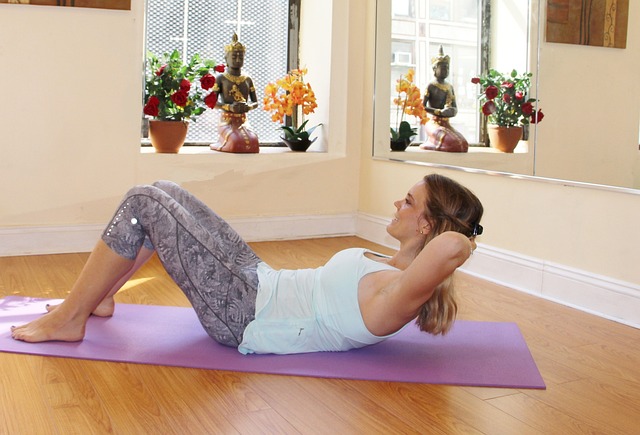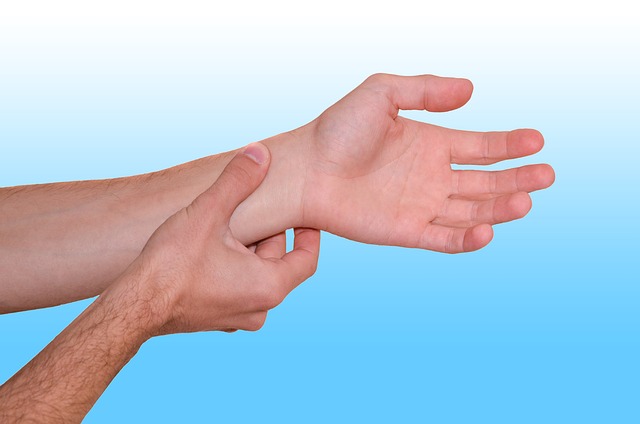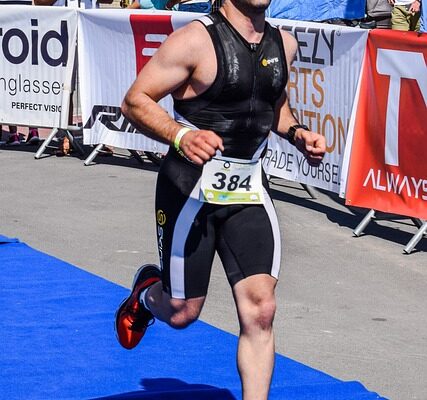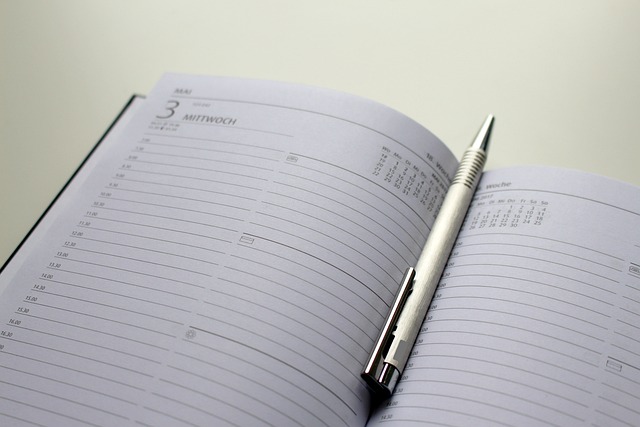Cardiovascular exercise in a specific heart rate zone can assist in ensuring a safe and productive workout. Understanding how hard you need to work out allows you to attain your goals faster. It also guarantees that you don’t overwork your body, making exercise dangerous.
Cardiovascular exercise’s effectiveness is dependent on its frequency, intensity, and duration. You know how often and for how long you exercise, but you need to know your heart rate to estimate your intensity.
Let’s take a look at the following five heart rate zones and how to incorporate them into your cardio routines.
Step 1: Calculate Your Maximum Heart Rate
Once you’ve determined your maximum heart rate (MHR), you can use heart zone training to adjust the intensity of your workout. Your maximal heart rate is the fastest pace at which your heart can beat. This varies from person to person. However, age is commonly used as a guide to estimate your maximum heart rate.
Subtraction of your age from 220 is one of the simplest ways to calculate your MHR. A more personalized number can be obtained through personal trainer testing or as a result of some of the high-tech heart rate monitors.
Step 2: Establish your target heart rate zones.
Exercising in different heart rate (HR) zones might provide various fitness benefits. These five activity zones are based on maximal heart rate percentage ranges. Each zone will offer you a different level of exertion, and your body will burn a different percentage of carbohydrates, protein, and fat.
Extremely low: less than 57% of MHR
While you are sedentary or engaged in extremely light activity, your heart rate is in this zone. Your ability to speak is not impaired in any way, but you will not burn as many calories as you would in some of the higher heart rate zones.
Exercising in the very mild heart rate zone is useful after a more rigorous workout session or after participating in a strenuous event. Light walking or cycling on flat terrain are two exercises that are likely to put you in this zone.

MHR light: 57% to 63%
57% to 63% of your maximal heart rate is the light heart rate zone. This is a simple and relaxing exercise zone. It is regarded as the lower end of the moderate-intensity zone. You will be able to hold a full conversation in this zone, albeit your breathing may be a little heavier than usual.
This zone’s workout will be less severe and will not provide the most cardiorespiratory training advantages. Yet, studies have shown that it can help reduce body fat, blood pressure, and cholesterol.
Walkers frequently find themselves in this zone unless they push themselves to walk more quickly. If you normally exercise in higher heart rate zones, going for a walk in this zone is a terrific way to have a relaxing day while still being active.
MHR is moderate: 64% to 76%.
At 64% to 76% of your maximal heart rate, you are in the moderate heart rate zone. This is the highest level of moderate-intensity exercise. If you use the talk test to determine your intensity, you will be breathing more heavily but still able to speak in short words.
Because the workout is more intensive, you burn more calories per minute than in the mild heart zone.
You gain from the same health and fat-burning benefits as the light heart zone. A brisk walking workout is an example of a workout in this zone.

MHR Vigorous: 77% to 95%
The strong heart rate zone ranges between 77% and 95% of your maximum heart rate. You’ve entered the vigorous-intensity zone. You will be breathing heavily and speaking in short words.
While exercising for endurance, this is the zone to aim for. It stimulates your body to enhance your circulatory system by forming new blood vessels and expands the capacity of your heart and lungs. It is considered that spending 20 to 60 minutes in this zone will provide the highest physical training effects.
As your effort increases, you burn more calories in the same period of time because you cover a greater distance in that time. The calories you burn are primarily determined by distance and weight. You burn more calories per minute if you travel farther in the same period of time.
This zone is normally achieved through running or cycling, but it can also be achieved through race walking or fast walking for an aerobic walking workout.
When you train at the upper end of this range (84% MHR or higher), the amount of oxygen you can consume—your VO2 max—improves. This amount of exertion pushes you to the point where your body starts producing lactic acid. This zone is used by runners, cyclists, and racewalkers to improve their speed.
In this heart rate zone, a workout should be 10-20 minutes long or part of an interval training exercise.

MHR maximum: 96% to 100%
The top zone ranges between 96% and 100% of your maximum heart rate. You can’t get any higher, and most people can only stay here for a few minutes. Apart from breathing single words, you will be unable to talk.
You should only be doing short bursts during interval training in this zone where you work hard for a minute, then rest for many minutes before repeating. You should only be doing short bursts during interval training in this zone where
See your doctor to check that you can exercise at such a high heart rate safely.
Step 3: Keep an eye on your heart rate while exercising.
Take your heart rate five minutes after you begin your workout and again before you begin your cool down. Take your pulse, use a heart rate monitor, or a fitness tracker or smartwatch to perform this.
Check Your Pulse
Your pulse might be found in your neck (carotid artery) or wrist (radial artery). You’ll need a timing device that displays seconds, so set your smartphone clock to stopwatch mode or use a clock, watch, or timer with a second hand.
- Use two fingers and avoid using your thumb, which has its own pulse. The easiest way to locate your pulse is on either side of your windpipe. Start looking for it at your windpipe, slightly beneath your jaw.
- Once you’ve found the pulse, gently press it. To get your heart rate, count your pulse for 15 seconds and multiply by.
- You may need to pause at first to accomplish this, but once you’ve found it, try to keep walking slowly or marching in place while checking your pulse to keep it from slowing down.
Examples:
- 120 beats per minute = 20 beats per 10 seconds
- 80 beats per minute = 20 beats for 15 seconds
Several treadmills and other workout equipment include built-in pulse sensors in the grips. You grip them, and your pulse is displayed on the machine’s display. You should not have to stop working out to get a reading. A smartphone app is another option.
Make use of a Heart Rate Monitor.
A chest strap-mounted heart rate monitor is more accurate than monitoring your pulse. They send the data to a wrist device or a smartphone app, allowing you to monitor your heart rate throughout your workout.
Models with higher pricing have many additional features, such as measuring your heart rate zones, stopwatch features, calories burned, and so on. Pulse monitors, which require you to place one or two fingers on a sensor to obtain a reading, are another type of heart rate monitor.
Several heart rate monitors allow you to program different heart rate zones. This is advantageous if you undertake a variety of high-intensity workouts because you won’t have to reconfigure it every time. Some models will tell you how long it takes for your heart to return to its normal rate.
Make use of a fitness tracker or a smartwatch.
Certain fitness bands and smartwatches, such as Fitbit and Apple Watch models, contain LED pulse sensors on the bottom adjacent to the skin. To obtain a consistent and accurate reading, they must be worn securely against the skin.
Several of them do not constantly read to conserve battery life. To receive an on-demand or continuous pulse measurement, consult the instructions for your monitor or watch.
These devices frequently offer heart rate zones that are simplified, such as light, moderate, and robust. Some allow you to select a target heart rate and receive a visual or audio alert when you reach it.
Change Up Your Workouts
Which zone should you exercise in? It is best to vary the time and intensity of your exercises and to allow for a rest day between days of hard activity in the vigorous and maximum zones.
A training schedule will often include shorter, higher-intensity workouts two to three days per week, alternating with a recovery/rest day. A lengthier training in the moderate or vigorous zone on one day is frequently used to accumulate mileage for a race such as a 10K, half marathon, or marathon.
Dave McGovern, a racewalker, suggests a weekly workout regimen that alternates workout intensity and heart rate to develop speed, endurance, and distance capacity:
- Monday: rest and little activities.
- Tuesday: Interval training in the vigorous zone, with a 10-minute of warmup; intervals of 30 seconds of sprinting followed by two minutes of rest, repeated eight to twelve times; and a 10-minute cool-down at an easy pace.
- Wednesday: Rest day with a moderate-intensity workout lasting 30 to 45 minutes.
- Thursday: Vigorous zone interval training with longer intervals of eight minutes at a high intensity and two minutes of recovery. Repeat this three to four times.
- Friday: Rest day with a moderate-intensity workout lasting 30 to 45 minutes.
- Saturday: 20 to 30 minutes of steady-state (tempo) exercise in the low end of the vigorous zone following a 10-minute warmup.
- Sunday: Distance workout in the low to moderate heart rate zone
To Conclude
Understanding your maximal heart rate allows you to push yourself to work out as hard as you can. However, keep in mind that you can only sustain this maximum effort for a short length of time.
Furthermore, exercising above your anaerobic threshold produces lactic acid production, which can result in post-exercise muscular discomfort.
See your doctor if you have an accident or illness or are using certain medications. Beta-blockers, which are commonly used to treat high blood pressure, can, for example, interfere with the heart’s normal reaction.
When you are exercising for health, fitness, or weight loss, it’s a good idea to mix your workouts in all of the heart rate zones to achieve the best effects.

